Asteroid hit the earth?Send a dart and bend it!
Author:Institute of Physics of the Ch Time:2022.09.29
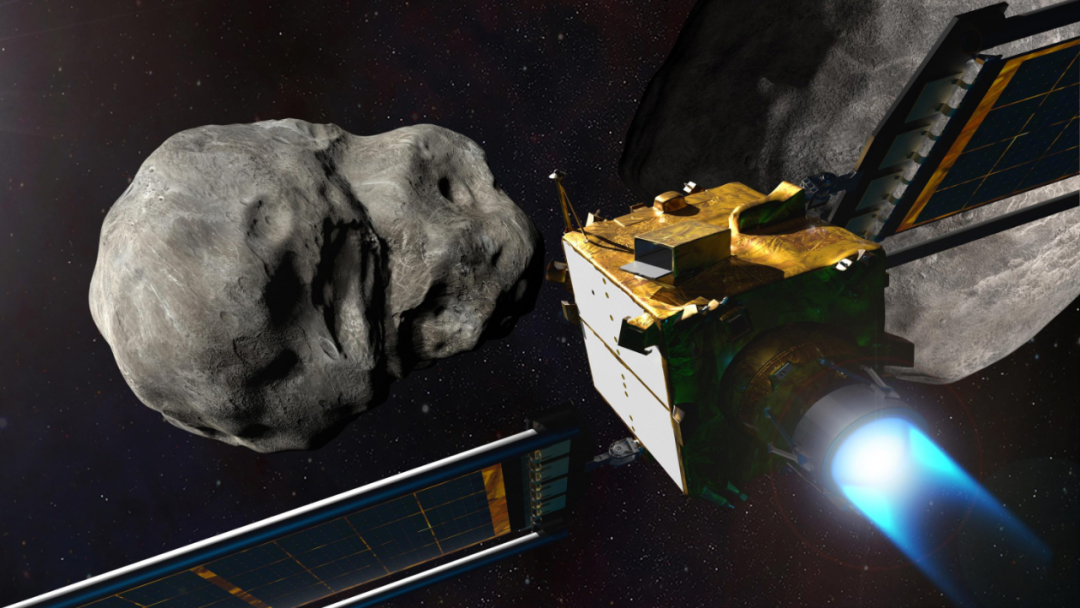
NASA's Double Planets redirect the Test (DART) detector with its impact target -two -star asteroid system art. Image source: NASA/JOHNS HOPKINS APL/STEVE GRIBBEN
Guide
If one day, what should Ictu's asteroid who was originally safe and self -defeating would be crazy about hitting the earth? Will we repeat the mistakes of dinosaurs? Don't worry, humans have taken the first step in active response.
At 7:14 am on September 27, 2022, Beijing time, a dual asteroid emitted by NASA (NASA) redirected to the test task (DART) detector. After ten months of space flight, finally Arrived at the end point of his own destiny -DiDymos and Dimorphos orbit, Dimorphos, finally hit the asteroid Demoz in a tragic posture of 23,760 kilometers per hour to 23,760 kilometers. After ending his short -term attention life, a historic chapter was unveiled for human planet defense. The astronomy of this period, let us focus on the "human darts" that are still born -Dart detectors.
Article | Zheng Xiaochen (Beijing Astronomical Museum)
Responsible editor | Han Yueyang and Lu Haoran
Little dart, take you
At 14:21, November 24, 2021, NASA used the SpaceX Falcon 9 Rockets to redirect a dual asteroid to the test task (DART) detector from the Van Bao Air Force Base, California. The task of DART is to visit two near -earth planets (see Figure 1), which also opened the first exercise of human planet defense.
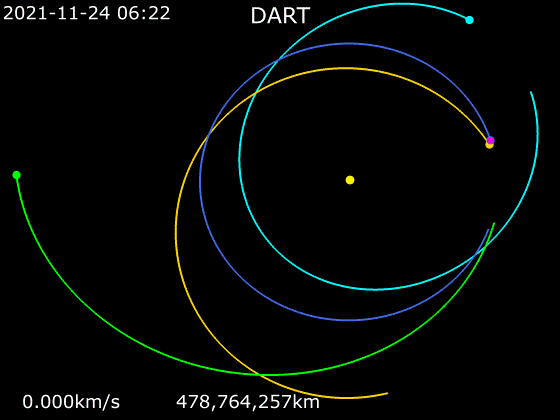
Figure 1: "Human Dart" DART DART detector's track moving map, which Huang Dian represents the sun, blue represents the real -time trajectory of the earth, and green represents the real -time trajectory of the two near -earth asteroids visited this time. Real -time trajectory, cyan and orange represent the real -time trajectory of two other near -ground planets 2001 CB21 and orpheus. Picture source: phoenix7777
In fact, this is not the first time that human beings have launched a detector to near-ground stars. There were Hayabusa 2 launched by NASA (JAXA), and the Osiris-Rex launched by NASA. However, unlike these predecessors detectors, this English abbreviation is the detector of darts, and no longer repeats the old path of "logging in → sample". Since its birth, it is destined to embark on a journey of breaking bones that cannot be returned. Essence
众所周知,除主星太阳外,太阳系主要由八大行星组成,这八颗行星又可以根据大小、成分进一步细分为两大阵营:一类是以地球为代表的岩石类行星,另一类则是以Jupiter's huge (gaseous/ice) giant planet. Interestingly, the two planetary camps in the solar system Chuhe and Han Dynasty are clear. Between the nearest planet Mars and the giant Jupiter, the nearest land -like planet Mars and the giant giant Jupiter are separated by the sky, that is, the small asteroid belt (Main Star Belt (Main Asteroid Belt).
The asteroid belt is the most dense area of the small planet in the solar system. It is estimated that the number of asteroids in the asteroid belt is as high as millions, and the size is 525 kilometers in diameter (about) to less than 10 meters. -19 million, smaller asteroids also have millions of huge [1]. Most of these asteroids have irregular shapes, and they are potholes and potholes, as if they have undergone wind and frost and suffer. In fact, these asteroids are indeed (about) 4.6 billion years ago that the solar system formed the wreckage left by the early stage, and has witnessed the many fierce and turbulent evolutionary history of the solar system in the early days.
After Qianfan's asteroids, they are now as calm as the entire solar system. Most of them are stable. They rotate around the sun with near -circular or ellipse trajectories. However, there are still some asteroids. Their orbit may change due to the huge gravitational disturbance of Jupiter, or because of the close interchange of Mars (equal celestial), entering the Mars orbit, approaching or even through the earth's track. Generally, this type of small asteroid, which is less than 1.3 daily distances, is called a near -earth planet (Neas).
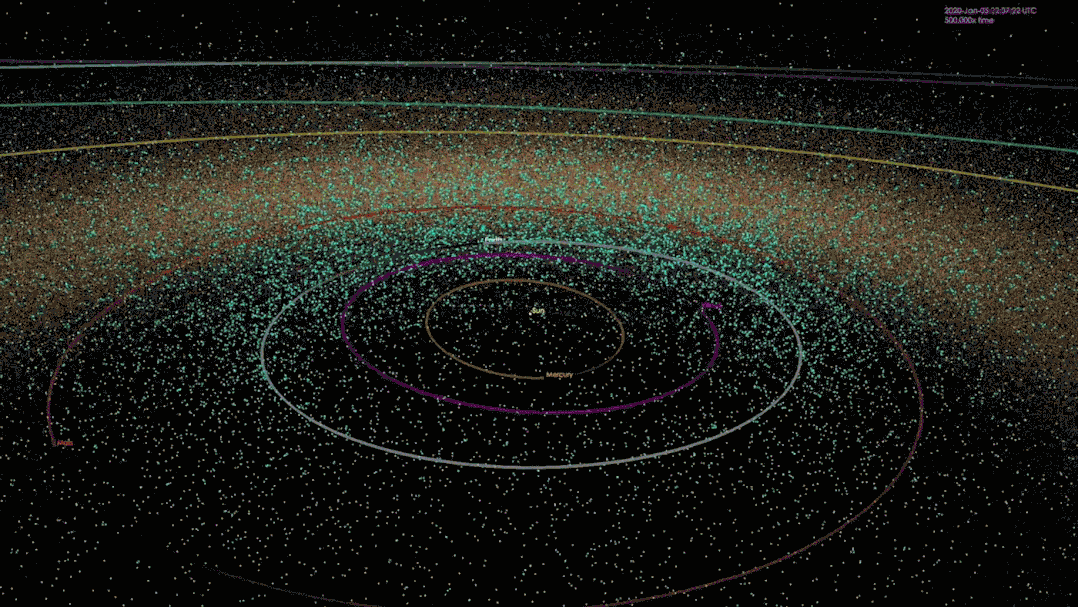
Figure 2: Over the past 20 years, the trajectory of the near -land planet (blue dots in the picture) and the eight planets of the solar system. Image source: NASA/JPL-CALTECH
At present, there are more than 29,000 asteroid groups that have been recorded in the case (see Figure 2), of which the number of near -ground stars with a size of more than 140 meters also exceeds 10,000. Dangerous molecules [2]. You know, if a small asteroid with a head of more than 10 kilometers hit the earth, it is enough to cause global species to extinct. Fortunately, there are not many small asteroids in large blocks, and the probability of intertwined with the earth's orbit is lower.
It is estimated that in the average year of millions of years, a small asteroid at about 10 kilometers of size may hit the earth; for hundreds of thousands of years, the earth may encounter a small asteroid impact. Judging from the short history of our human beings, we can ignore it for the time being. However, the smaller the celestial bodies, the higher the probability of hitting the earth. A small planet with a size of more than 140 meters may visit the earth in 20,000 years. Although this type of asteroid is not large, the damage is not small. If it hit the land, it may directly destroy a small city. Even if it hit the ocean, it will cause a huge tsunami [3]. These thrilling plots that may happen in the future have become the source of inspiration of many disaster movies. The small and resonance caused by human beings and the heroic feelings rooted in the heart are all the weapons of box office harvesting. Whether it was "ArmageDon" in the early years or "Lone Moon" released this year, the audience in front of the screen was cheering for the heroes of saviors, and in the reality outside the screen. Indeed, there is such a group of scientists who are in the unknown implementation of art as reality, and plan for the crisis of human beings tens of millions of years.
Asteroid, watch darts
So, how to block the galloping asteroids from galloping? This is exactly the planet defense that needs to be carried out in the world, that is, the difficult task of using planet science to solve the danger of hitting the small planet (small celestial body).
In many disaster movies, humans chose to explode the small planet who was about to hit the earth through nuclear explosion, and saved civilizations in a bright firework. Of course, we can also throw a dart less than so dazzling, hitting the original direction of the asteroid, and eventually wiped with the earth and passed each other.
The "dart" thrown by NASA -DART detector, Zheng Jian refers to Dimorphos, asteroid. Prior to this, humans had accumulated some experience in small celestial bodies. For example, as early as 2005, the Deep IMPACT detector of NASA successfully hit the comet's core of Comet No. 1 by the impact device [4] by release the impact. The detector hit a big pit on the asteroid Ryugu by releasing the impact device [5]. Therefore, it is not difficult to hit the asteroid at today's technical level. But shaking a small planet and making it from observable deviation is not easy.
You know, the diameter of the asteroid Dimos is about 160 meters (see Figure 3), and the estimated weight is about 5 billion kg, and the human dart DART detector, even if its solar panel has a total length of less than 20 meters, it is less than 20 meters. The impact quality is expected to be about 570 kg [6]. It is not difficult to imagine that such a small human dart dart is thrown up, which has a limited impact on Dimo Fos.
Figure 3: Dimo Fossy, which is quite sizes in the Roman horns. Picture source: ESA
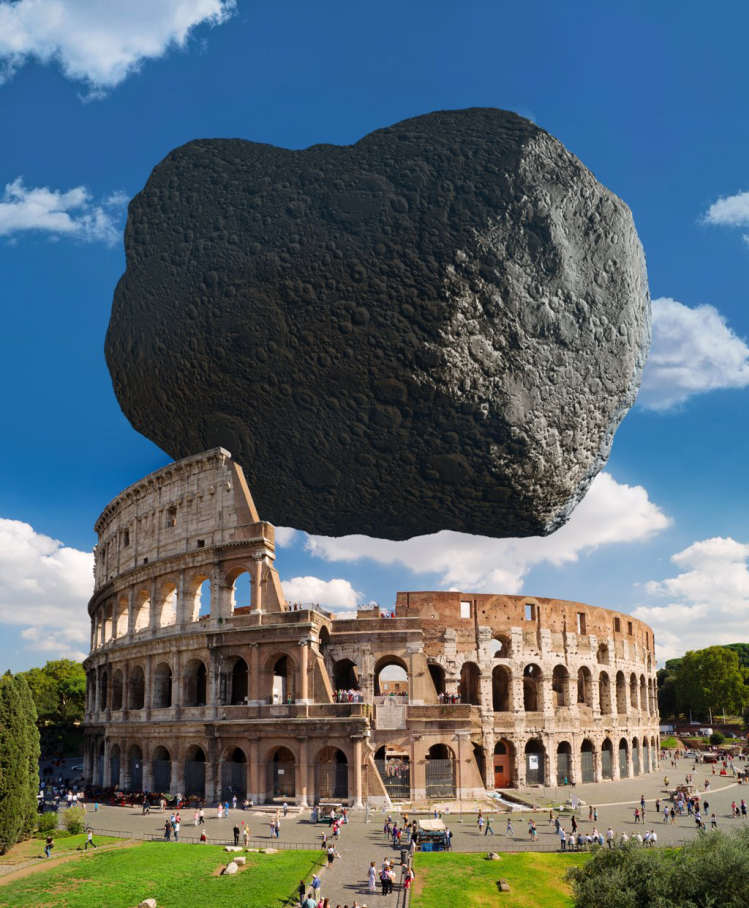
If Dimo Foss is a maverick asteroid, the changes in the revolving track caused by this influence are minimal, and it is difficult to explore with existing technical means. But Miao Miao belongs to a double -star asteroid system in Dimorfus. It is 1.18 kilometers away from its (about). There is a leading companion -small asteroid Didimos [6].
Compared with Dimoz, Di Dimos is huge, with a diameter of about 780 meters. Therefore, Dimo Foss is often regarded as a satellite of the asteroid Didimos. The revolution cycle of Didimos is about 2.1 years, and the rail centrifugal rate reaches 0.38 (that is, its ellipse orbit is a bit "flat", not as round as the earth's orbit). However, its orbit does not interact with the earth.
Two asteroids around each other, less than 12 hours of turning cycle, one of the tiny speed changes will be clearly reflected in the two -star track of the two. For example, if the speed of the detector's impact is slowed down, the rotation track of the double -star system will be visible to the telescope (see Figure 4). According to estimates, if the DART detector can hit the Dimo Fossy at a speed of 6 kilometers per second at a speed of 6 kilometers per second, it will shorten the winding cycle between the two for several minutes [7]. This orbit changes The existing detection technology is not a problem.
Not only that, the kinetic impact caused by the DART detector's impact, in an environment dominated by Didimos's gravity, is not enough to destroy the stability of the asteroid Dimos and cause terrible chain reactions. Therefore, although Dimos and Di Dimos around each other, the years are quiet, and (a few) will not pose a practical threat to the earth within a century, but it is still difficult to escape and become the first choice for humans to conduct planet defense experiments. land.
Figure 4: The impact of the DART detector will change the winding track of the small asteroid in the double star system (from the white original orbit to a new orbit of blue). Image source: NASA/JOHNS HOPKINS APL
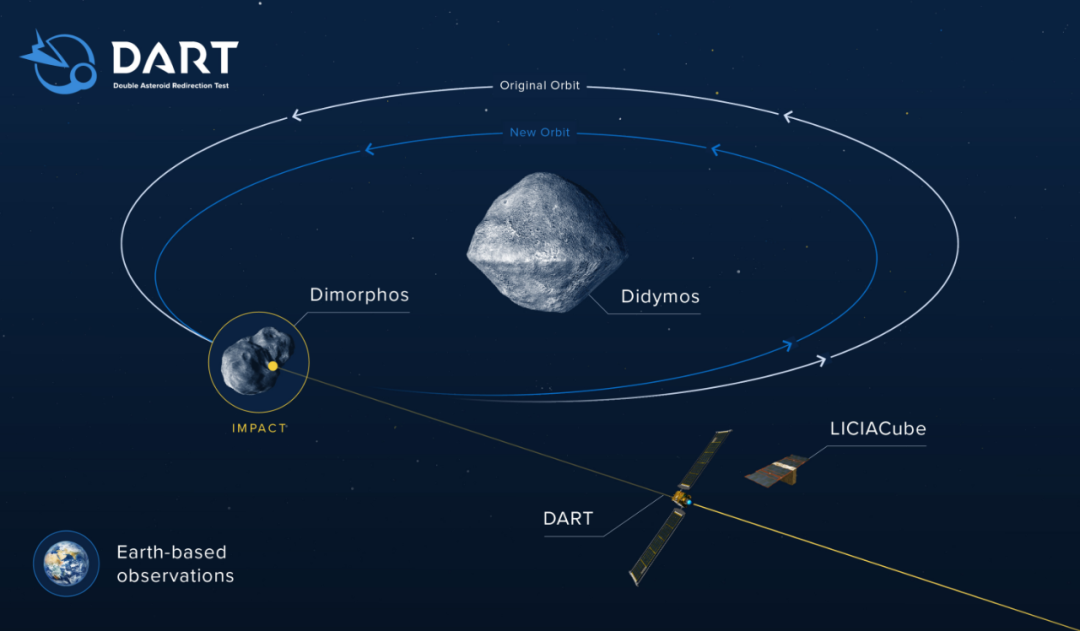
At 6:54 am on September 27, 2022, Beijing time, after a ten -month space journey, the Dart detector finally accurately locks the asteroid Dim Fos. After 20 minutes, the DART detection of all the pusher cut off the DART detection of all the pushing device. At a speed of 23,760 kilometers per hour, he hit a small asteroid Dim Foss, with a broken bone [8].
At this moment, Double Star Walker Dimoz and Di Dimos just flew over the earth, and the burial place of the Dart detector was only 11 million kilometers away from its birth (recently). Although this distance is not enough to make the telescopes on the ground impact the whole picture, it is also a rare observation opportunity. For example, the cooperation project of NASA and the University of Hawaii, the asteroid hits the final alarm system (ATLAS) project, uses the four telescopes from all over the world to track the asteroid Dimoz. ——The South African Suseland Observation Station shot a high -energy impact picture (see Figure 5), capturing the instant of the dart dart DART detector dying.
Figure 5: ATLAS shoots a small video hit by DART detector and asteroid Demoz. Video source: Atlas Project, University of Hawaii Via Storyful
The foundation of the Hoho Hoho Huo Huo can also use the hidden star method to observe the periodic brightness changes of the reflected light of the two -star system, and infer the changes in the cycle cycle of the binocar asteroid system before and after the collision.
At present, many observatorys around the world have already treated them, including the Weibu Space Telescope, which has made a big time a while ago, has also adjusted the direction to participate in the feast of this observation.
Through this asteroid impact bias trial, humans are expected to obtain real impact data through Dimorfos' (double star) track change. Prior to this, scientists can often only make small impact incidents in the laboratory, and build a computing model based on this. As for whether these computing models are suitable for small asteroids with complex physical properties, it is unknown. The impact results of DART will be verified and even improved the accuracy of the calculation model [9].
Of course, the sacrifice of the DART detector is far more than that. The DART detector that successfully completes the impact task has opened up the precedent of a small planet test field, and successfully verified the feasibility of various new technologies such as independent navigation and new ion promotion systems such as independent navigation and new ion promotion systems. [10], in order to deal with the hopes of the stars that may face the future, a bright front road was available.
In order to initially evaluate the results of the impact test, the DART detector comes with a photographer at the beginning of the design -a light cubic satellite called Liciacube, which is used for asteroid imaging. The satellite is deployed by the Italian Aerospace Bureau (ASI) and contains two optical cameras. It had been separated from the DART detector a few weeks before the impact. [8] According to the plan, the cubic satellite was adjusted through the track adjustment, and after about 3 minutes of the DART detector hit the impact place, the shooting confirmation of the impact, observing the splashing of the material after the collision (see Figure 6), and the photo was sent back to the earth back to the earth Essence
A few days ago, the first batch of image industries taken by LICIACUBE have been returned. Scientists are still conducting detailed scientific analysis of these pictures, such as evaluating the asteroid Dimoz and many more.
Figure 6: The four asteroid Dimofis taken by LICIACUBE was hit by the image before and after the DART detector. Picture source: ASI/NASA
Perhaps soon after, we can still see the freshly baked impact pit on the surface of Dimofus, and appreciate the landscape of another hemisphere that the DART detector will never see.
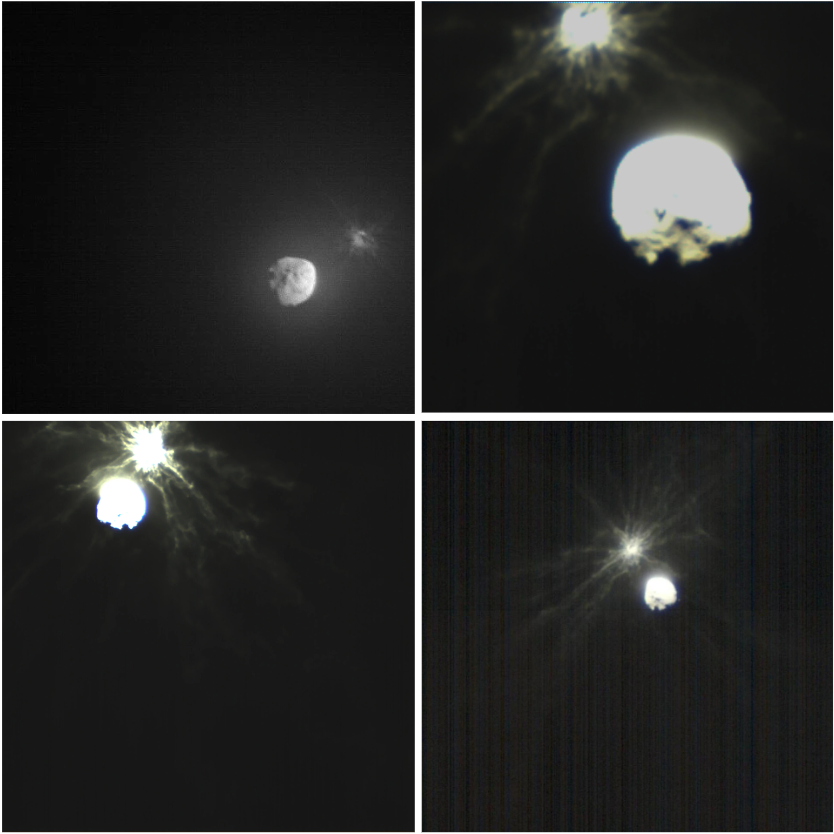
However, if you want to understand the impact results of the DART detector, another successor is needed. The Herra (11] by the European Aerospace Agency (ESA) will be responsible for it [11]. The Hera is composed of a main detector and two accompaniment cubic satellites (see Figure 7). According to the plan, the Herra will be launched in 2024, and at the end of 2026 (four years after the Dart detector impacts) near the asteroid Didimos, conducts follow -up in -depth detection for the DART detector collision test, including the small ones, including the small ones. Detailed research on the measurement of the meteorite pit and the dynamic effect after impact. As a human detector who has visited again, the Herra is expected to further clarify Dimo Foss's quality and greatly expand human planet defense knowledge. Of course, planetary defense requires the joint efforts of human beings all over the world. China will also form a near -earth asteroid defense system to strive to implement a small asteroid impact defense test in 2025 or 2026 to deal with human beings such as small asteroids and other places. The threat is exhausted.
Figure 7: The European Aerospace Administration Hera and its two sub -satellite surveys Dart detectors hitting a schematic diagram of the meteorite pit. Picture source: ESA
Rear
Back to the history of the entire solar system, the impact has never been absent, especially in the early days when the scope of the power has not been delineated. Today, there is still a mark of the past collision in the solar system.
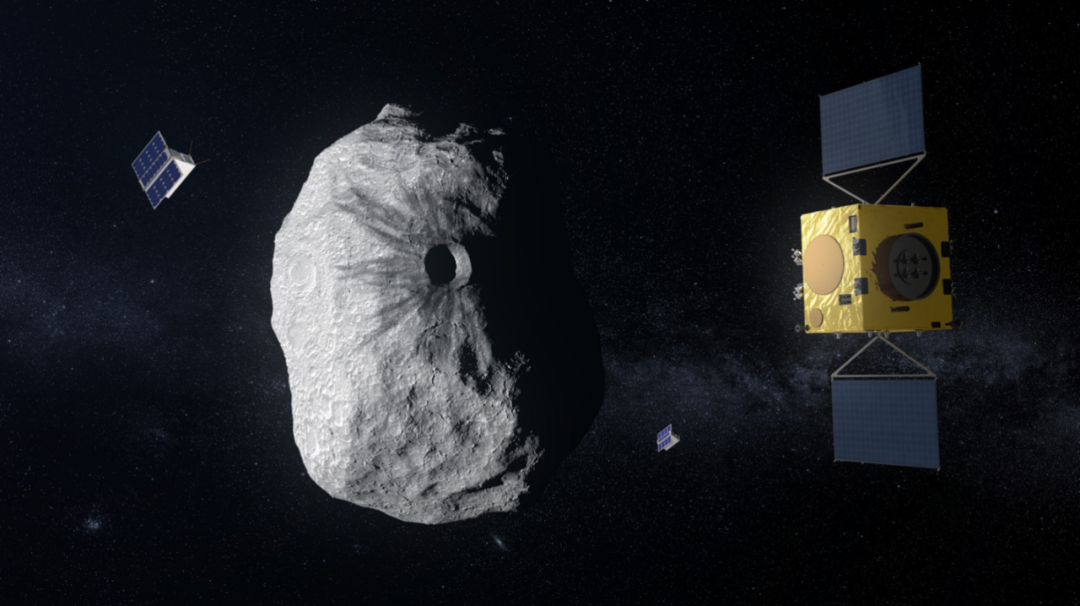
We might be thanks to the collision. The earth was born in countless collisions, and the moon above the head provided a lot of creative inspiration for countless literati (of course, in addition to the spiritual level, it also had a great practical effect). It may be born. A big collision of about 4.5 billion years ago [12,13]. However, if the dinosaurs are in the heavens, it may strongly oppose this argument, because the culprit that leads to the extinction of the dinosaurs is likely to be a diameter of about 12 kilometers in diameter of 65 million years ago, named Hick Suruberry Xiaoxing Star [14].
However, although humans are lucky enough to miss the biological extinction caused by Hick Suruber, although the probability of human beings in the next century will not see a small asteroid with a diameter of more than 140 meters hit the earth. But just like the second boots will end, the asteroid who destroyed the earth will come to a certain day. If before, human beings have not been extinct because of environmental pollution, global warming, large epidemic diseases, energy shortage, self -killing, etc., then, I hope we can calmly cope with this aggressive visitors.
The starting point of everything comes from the smoke and dust on the surface of the small asteroid Dimos on the morning of September 27, 2022 (see Figure 8).
Figure 8: The art renderings of the DART detector hit the Small Star Demous. Image source: ESA – SCIENCEFFICE.ORG
references:
[1] https://solarsystem.nasa.gov/asteroids-and-Meteors/in-depth
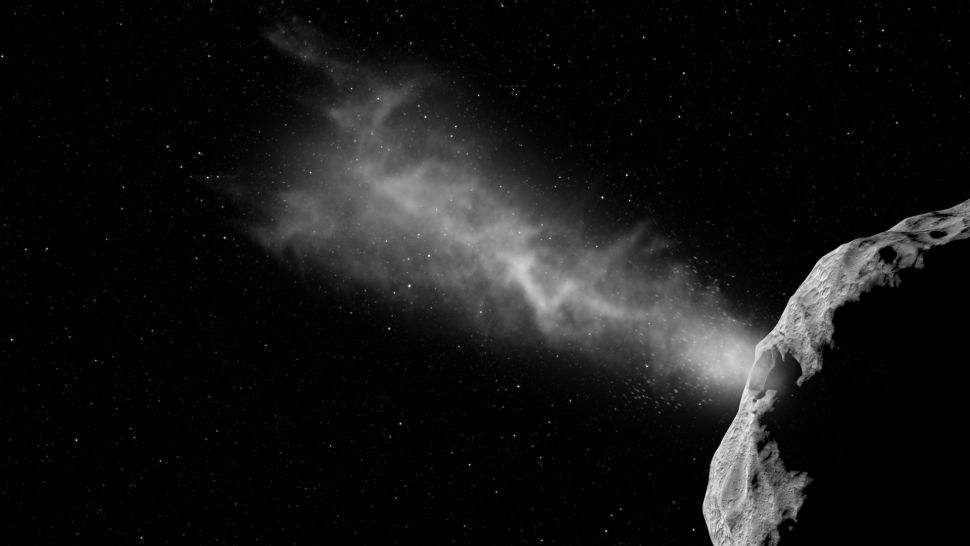
[2] NASA/JPL CNEOS "Discovery Statistics -Cumulative Totals" https://cneos.jpl.nasa.gov/totals.html
[3] Sun Weixin's "The First Fighting of the Earth-Dart Mission", https://udn.com/news/story/7340/6636262? From = Udn-Relatednews_CH2
[4] Justin Ray. Delta Launch Report: Overview of Nasa's Deep IMPACT Comet Mission.spaceFlight now. 2005-01-09.
[5] New Photos Show the Surprisingly Big Crater Blaster Blaster Asteroid Ryugu by Japan's Hayabusa2 Probe, George DVORSky, GIZMODO, 22 May 2019..
[6] Didymos — the IDEAL TARGET for Dart's Mission, https://dart.jhuapl.edu/mission/index.php
[7] Planetary Office "Departing, hitting asteroids, revenge for dinosaurs! ", Https://www.zhihu.com/question/501257766
[8] TARIQ MALIK: DART Asteroid Crash: What time will nasa probe hit dimorphos on sept. 26, https://www.space.com/dart-Asteroid-crash-what-times tattings About dart, https://dart.jhuapl.edu/press-kit/index.php
[10] https://dart.jhuapl.edu/missSion/impactor-daceCraft.php
[11] Michel, P., et al. (2022). The ESA Hera Mission: Detailed Characterization of the DART Impact Outcome and of the Binary Asteroid (65803) Didymos.The Planetary Science Journal, Volume 3, Number 7 (on open Access).
[12] Hartmann, W. K., Davis, D. R. (1975). Satellite-SIZED PLANETESIMALS and Lunar Origin.icarus, 24 (4), 504-515.
[13] Canup, R. M., ASPHAUG, E. (2001). Origin of the Moon in a Giant Impact Near the Earth's Formation.nature, 412 (6848), 708.
[14] Peter Schul, et al. (2010). The Chicxulub Asteroid Impact and Mass Extinction at the Cretaceous -Paleogene Boundry, Science, 327 (5970). 1214-1218..
Reprinted content only represents the author's point of view
Does not represent the position of the Institute of Physics of the Chinese Academy of Sciences
Source: Mr. Sai
Original title: Xiaoxing hit the earth? Send a dart and bend it! Mr. Sai Astronomy
Edit: Seventeen
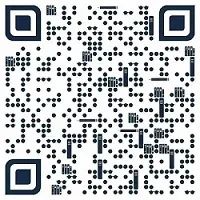
- END -
upgrade!Smart terminal installation of all elderly service centers in Shangcheng

Recently, all 22 street -level pension service centers in Shangcheng District have...
Chen Dong and Liu Yang of Shenzhou 14 have been successfully out of the cabin
China News Service, Beijing, September 1st (Malaysia Yang Xin) According to the China Manned Aerospace Engineering Office, at 18:26 on September 1, 2022, Beijing time, astronaut Chen Dong successfull